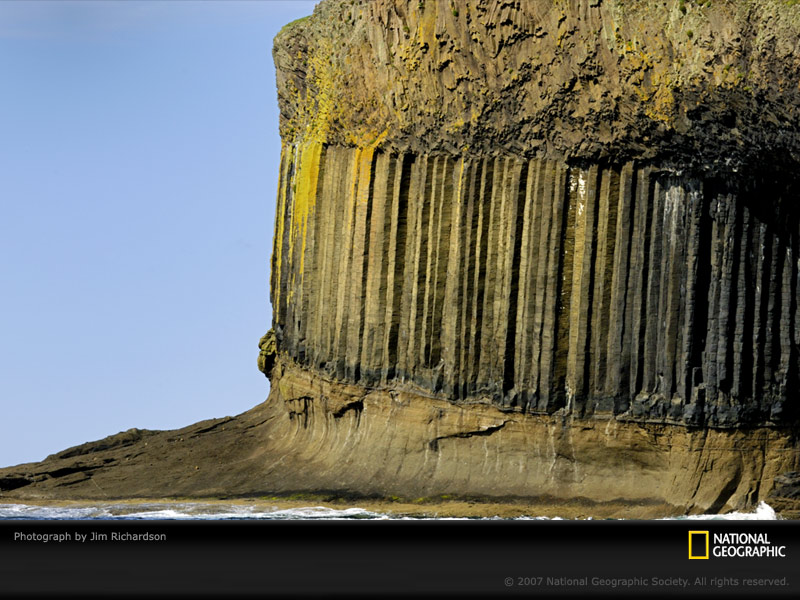Chinstrap penguins (Pygoscelis antarctica) ride out high surf on blue-ice
icebergs near Candlemas Island in the South Sandwich Islands
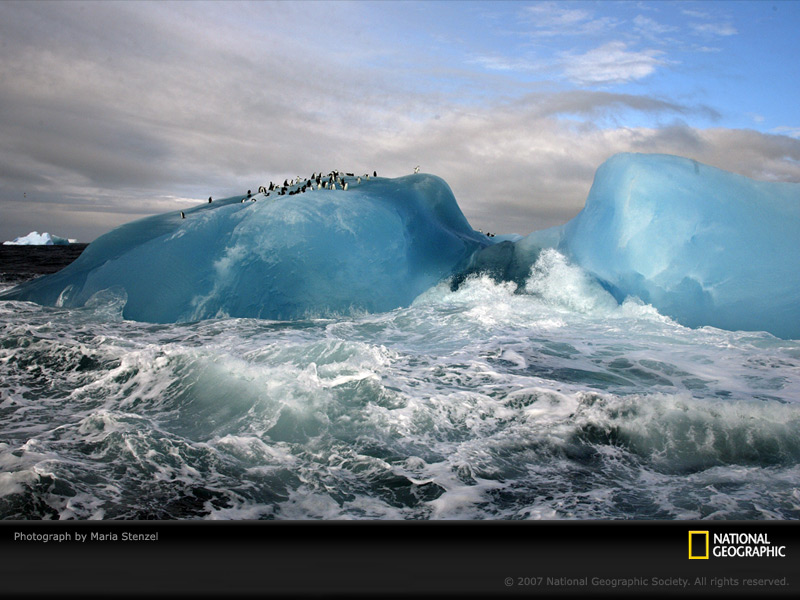
For trees that grow on mountaintops near Cape Town, South Africa, wind
can be a magnificent sculptor. Trees that can handle the wind's effects
best will alter their shape to deal with the load of the wind.

Silhouetted by the sun, the Hand of Fatima rock formations near Hombori
village stretch toward the sky in Mali. The tallest tower rises 2,000 feet
(610 meters) from the desert floor. Lore has it that the formations' name
stems from the five towers' resemblance to a hand from the sky.

Erosion's force becomes clear in these limestone cliffs in Port Campbell
National Park, Australia. About five million years ago the area was a
limestone plateau, but as sea levels rose the effects of surf and rain
began to carve out these magnificent cliffs, along with stacks and arches

A storm passes over Yellow Mounds Overlook in South Dakota’s
Badlands, casting light and shadow below. Although the region’s name
derives from the Oglala Sioux words mako sica or
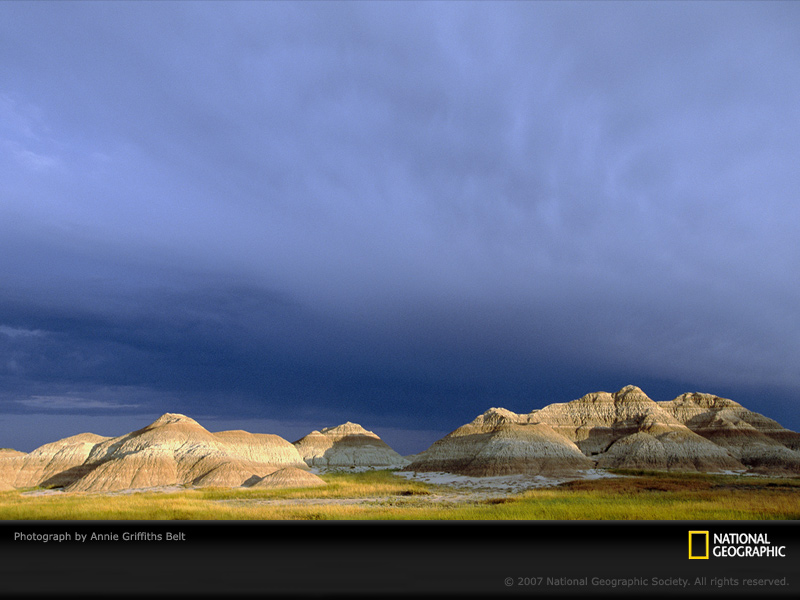
Travertine chimneys near Lake Abbe, Djibouti, were created by hot
springs depositing calcium carbonate—the same process that creates
stalactites and stalagmites. Some of the formations reach 165 feet (50
meters) near the lake located on the Ethiopia-Djibouti border.
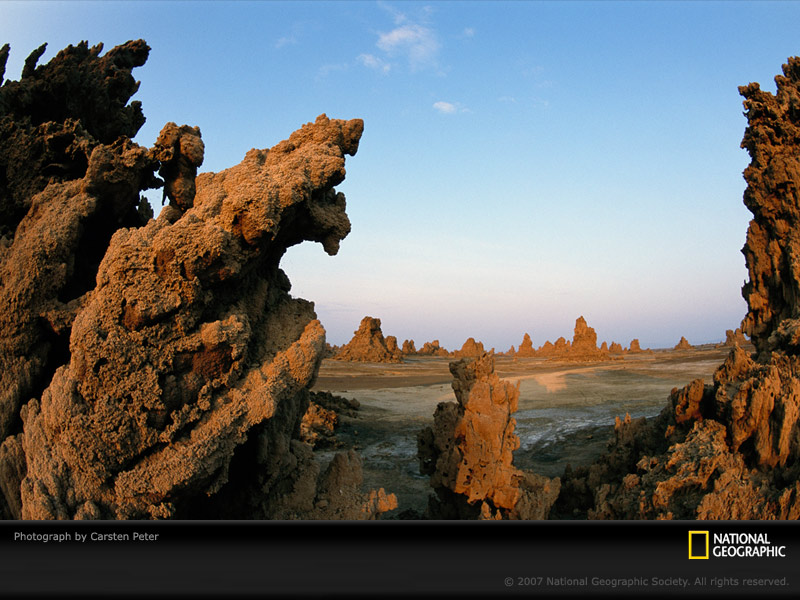
A thick blanket of snow covers West Thumb Geyser Basin in Yellowstone
National Park. There are more geysers in this park than anywhere else in
the world.
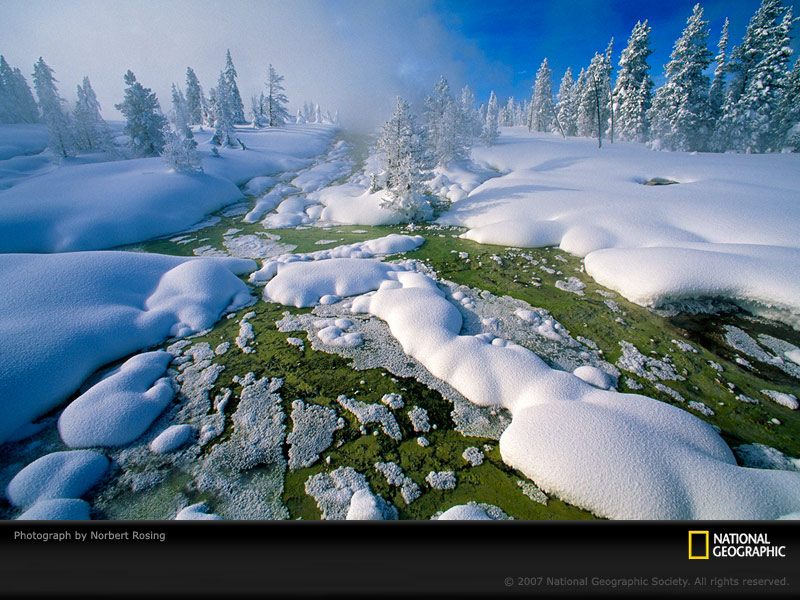
Towers of salt and a riverbed colored by crystallized salt create an
otherworldly landscape in Ethiopia’s Danakil Desert. Sitting more than
300 feet (90 meters) below sea level, with temperatures reaching 120
degrees Fahrenheit (49 degrees Celsius), local inhabitants prize the
Danakil for one thing: its salt deposits.
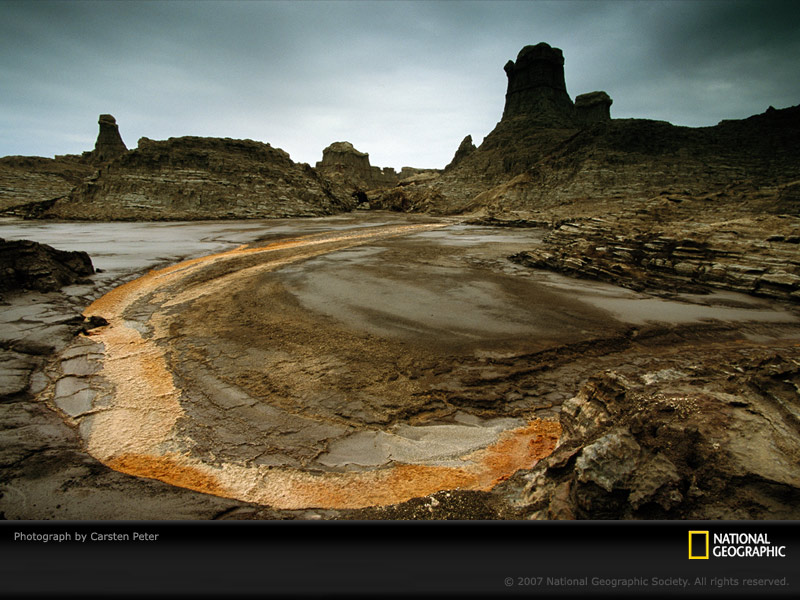
A deep gorge drops some 650 feet (198 meters) near the abandoned
city of Araden, Crete. Visitors can descend into the gorge and walk a
little more than 4 miles (6.4 kilometers) to the Mediterranean Sea. In
addition to magnificent scenery, the gorge provides a 2,460-foot (750-meter) descent to the sea.

Towering in close symmetry, these basalt columns near Fingal’s Cave
form the base of the Scottish island of Staffa. The columns formed when
cooling lava flows met bedrock and the region’s cold weather. The island
contains three main caves.
